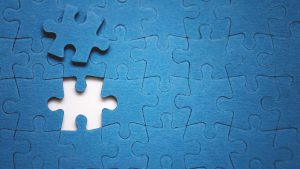Erev Pesach (the day before Passover) is one of the busiest days of the year, and since this year (2021) it is on Shabbos, there are several issues that are unique to this year.
Thursday, March 25 (12 Nissan)
Typically, first-born males fast on Erev Pesach. However, it is customary for them to take part in a bris or siyum to avoid fasting. Fasting is prohibited on Shabbos. Therefore, for Pesach 2021, the firstborns will be fasting on Thursday. As usual, you can attend a bris or siyum as an alternative to fasting.
Thursday Night March 25 (13 Nissan)
Bedikas chametz (searching for the bread):
Leavened bread, known as chametz, is forbidden throughout all eight days of Pesach. You may not eat nor posses any bread, cakes, cookies, crackers, and any other item made from wheat, barley, oats, spelt or rye, unless prepared in a special Pesach way.
The night before Pesach, we search the house for any chometz that may be left in the house. You should place 10 pieces of bread around the house before the search begins. You should conduct the search on Thursday night this year, Pesach 2021. After completing the search, we recite the first kol chamira, a text found in any haggadah or Passover prayer book. We recite this passage to nullify any chametz that may have not been found. Chametz to be eaten on Friday and Shabbos is stored in a safe place, where it won’t get mixed with the Pesach foods.
Friday Morning March 26 (13 Nissan)
The burning of the chametz takes place Friday morning, but if necessary, you have until Shabbos begins. Consult a Jewish calendar for the correct time in your area. Do not say the second kol chamira after burning the chametz!
The sale of chametz will take place Friday morning at the usual time. After the burning, you may not use any of the items that were sold.
Be sure to take the trash to the curb or dumpster before Shabbos if it contains any chometz.
You should make sure to take care of all the preparations usually made for the Seder and the holiday on Friday. You can grate the horseradish, check the leaves, make the charoses, and roast the shankbone and egg before Shabbos.
Other than the challah, all Shabbos foods should be kosher for Pesach and cooked in Pesach utensils. Candlesticks can’t be moved on Shabbos. Therefore, you should not put them on a chametz tablecloth.
Friday night March 26 (14 Nissan)
One must eat bread at all the Shabbos meals. You should not eat the challah over the Pesach utensils and tablecloths. Prepare the exact amount you need for the members of your household, for you do not want to be stuck with leftovers. It is best for you to serve small rolls, as they leave fewer crumbs, and to eat over a tissue or napkin, which can be flushed down the toilet when done. Wash your hands from any chametz residue, and then continue with your Shabbos meal. For those who are concerned about having chametz around, there is also the option of eating kosher for Passover egg matzos (which may be preferable for those with braces). Consult your rabbi to know how much of it must be consumed.
Shabbos Day March 27 (14 Nissan)
You may not eat any chametz after the fourth hour on Shabbos morning. Consult a Jewish calendar for the exact time in your area. One may not eat Passover matzos this entire day. We eat the meal early in the morning, so that the challah is finished at the proper time. We use the same procedure Shabbos day as we did Friday night.
After you finish eating the challah, wash your hands and rinse your mouth well, making sure to leave no residue of chametz. Use a dry, chametz toothbrush, and remember that no toothpaste may be used. You must get rid of any leftover chametz by crumbling it over the toilet and flushing it.
When done, recite the second kol chamira. You then continue the Shabbos meal, eating only Passover foods and no matzah.
For seudah shlishis (the third meal), one should eat meat, fish or fruit sometime in the afternoon. Do not eat too much; you want to have an appetite for the matzah at the Seder.
Many people utilize the long Shabbos afternoon as an opportunity to familiarize themselves with the text and translation of the Haggadah in advance of the Seder. It’s also a good idea to take a nap, but be sure not to verbally express that you are taking a nap in preparation of the Seder.
Do not make any preparations for the Seder, such as setting the table, washing the dishes, or making the salt water, until after Shabbos is over.
Insert Havdalah into the Kiddush at the Seder. Follow your Haggadah for the correct text and procedure.
For a more detailed look at Pesach preparations and practices for 2021, check out out 10 Minute Passover Guide.
You can also download the guide here:



Howie Zimmerman
says:Thanks for sharing as I found the answers to my questions here.